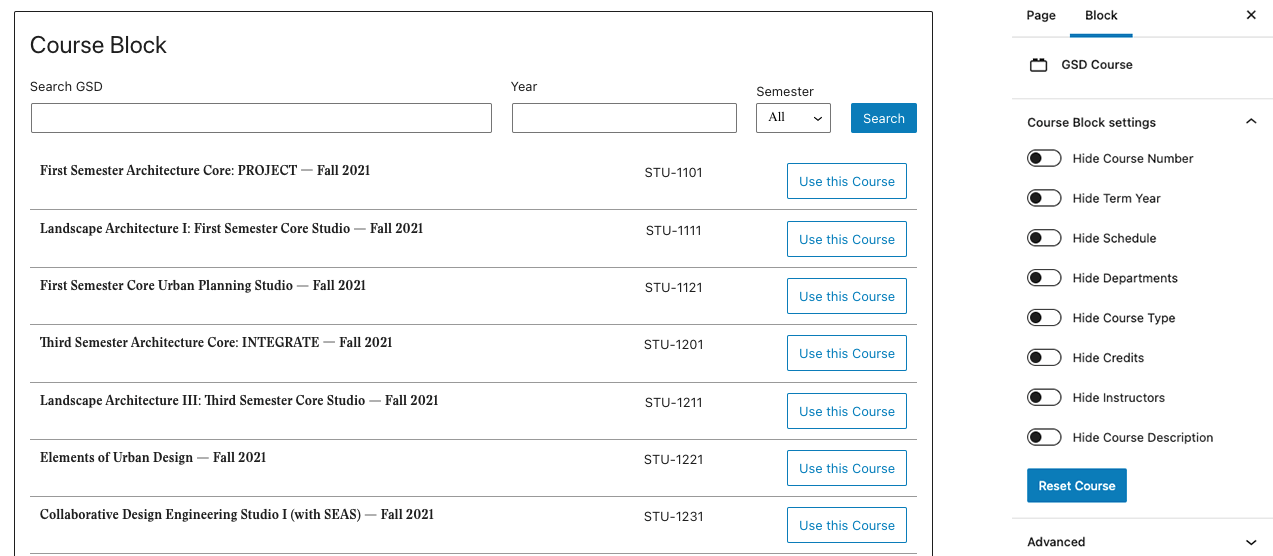GSD Courses Block
This block pulls in GSD course information from the GSD courses API. Site editors have the option of showing specific course information, such as course number, term and year, course type, course description, etc.
System ref: GSD COURSE
GSD Course Block Sample
Mon, Wed 8:00 AM – 10:00 AM
Fri 8:00 AM – 11:59 AM
Mon, Wed 4:00 PM – 5:59 PM
Department of Landscape Architecture
Core Studio
8 credits
Landscape Architecture I: First Semester Core Studio
Instructors: Jungyoon Kim, Francesca Benedetto, Pablo Pérez-Ramos, Emily Wettstein, Alistair McIntosh
GSD 1111 is the first in a sequence of four core studios that, together, constitute the foundation of your time at the GSD. The school’s curriculum asserts that design is at the center of a landscape architecture education. In the studios, the hands-on experience of design is a synthetic act, bringing together theory, technique, and aesthetic sensibility in the making of a landscape. In this studio, you will apply the skills and knowledge acquired through other first year courses—Histories of Landscape Architecture; Landscape Representation; and Ecologies, Techniques, Technologies.
The central topic of this semester’s studio is the PUBLIC. It will be explored through two themes— SPACE FOR PROTESTS: landscape as a venue that accommodate the right to congregate to discuss matters of public interest; and SPACE FOR HEALING: landscape as an agent of reconciliation. As a discipline that deals with the transformation and the production of space, landscape architecture is in essence as a materialist practice, whose outcome is made out of real, physical things. In this course we will put the accent on how the physical configurations produced by landscape architecture can also have significant consequences that transcend the physical. The landscapes we design enable and inhibit different forms of relationship between different entities. In urban contexts, such as the ones we will be working with during this semester, PEOPLE constitute the central subject and object of those interactions. Within urban landscapes, it is the public space, more specifically, what constitutes the fundamental domain in the provision and protection of democracy, for it is in the public space where the most profound manifestations of social conflict, individual self-expression, and cultural exchange take place.
In the design of the public, it is therefore impossible to extricate the political dimension. In this studio we will investigate both the physical and the political implications in the transformation of the City Hall Plaza in Boston, and the Charles River right bank in Allston. We will think of design as the initiation of processes, as the introduction of specific physical transformations for later and not fully predictable social processes to develop. Through these two different sites, we will look into public space as representation of our shared conditions of existence, as expression of difference, values, individuality, universality, knowledge, and power, and we will study how the changes we introduce in the received configuration of the public imply, inevitably, the affirmation, the manipulation, and the suppression of some of those conditions. While the landscapes we design are nested and largely determined by broad and intricate networks of social and economic processes, in this studio we will focus on how the specific forms we provide our landscapes with might constitute in themselves powerful tools in the transformation of those processes.
GSD course Settings
When you add the GSD Course block to your page, you will be prompted to search for an existing GSD course. Each block contains one course, so if you’d like to include more than one course then you will need to add additional blocks. Once you have selected a course, use the Block Settings tab on the right to customize how it is presented.

This block uses information pulled in from the GSD website, so adjustments to course information need to be updated through the GSD site. This block will always display the course name, however you can choose to show or hide other details.
Setting options:
- Search GSD | Year | Semester: These fields can be used in combination with each other to search for a course. Use the Search field to search for a keyword in appears in the title or course description. Use the Year field to find courses that took place in a specific year. Use the Semester dropdown to specify Fall or Spring. Once you have found the course that you are looking for, click the Use this Course button to add it to the block.
- Hide Course Number: In the Block Settings tab, you can choose to hide the course number.
- Hide Term Year: In the Block Settings tab, you can choose to hide the term and year that the course was held.
- Hide Schedule: In the Block Settings tab, you can choose to hide the course’s meeting dates and times.
- Hide Departments: In the Block Settings tab, you can choose to hide the department(s) associated with this course.
- Hide Course Type: In the Block Settings tab, you can choose to hide the course type.
- Hide Credits: In the Block Settings tab, you can choose to hide the number of credits allocated to this course.
- Hide Instructors: In the Block Settings tab, you can choose to hide the instructor(s) for this course.
- Hide Course Description: In the Block Settings tab, you can choose to hide the course description.
- Reset Course: In the Block Settings tab, this will remove the selected course so you can choose a new one.
